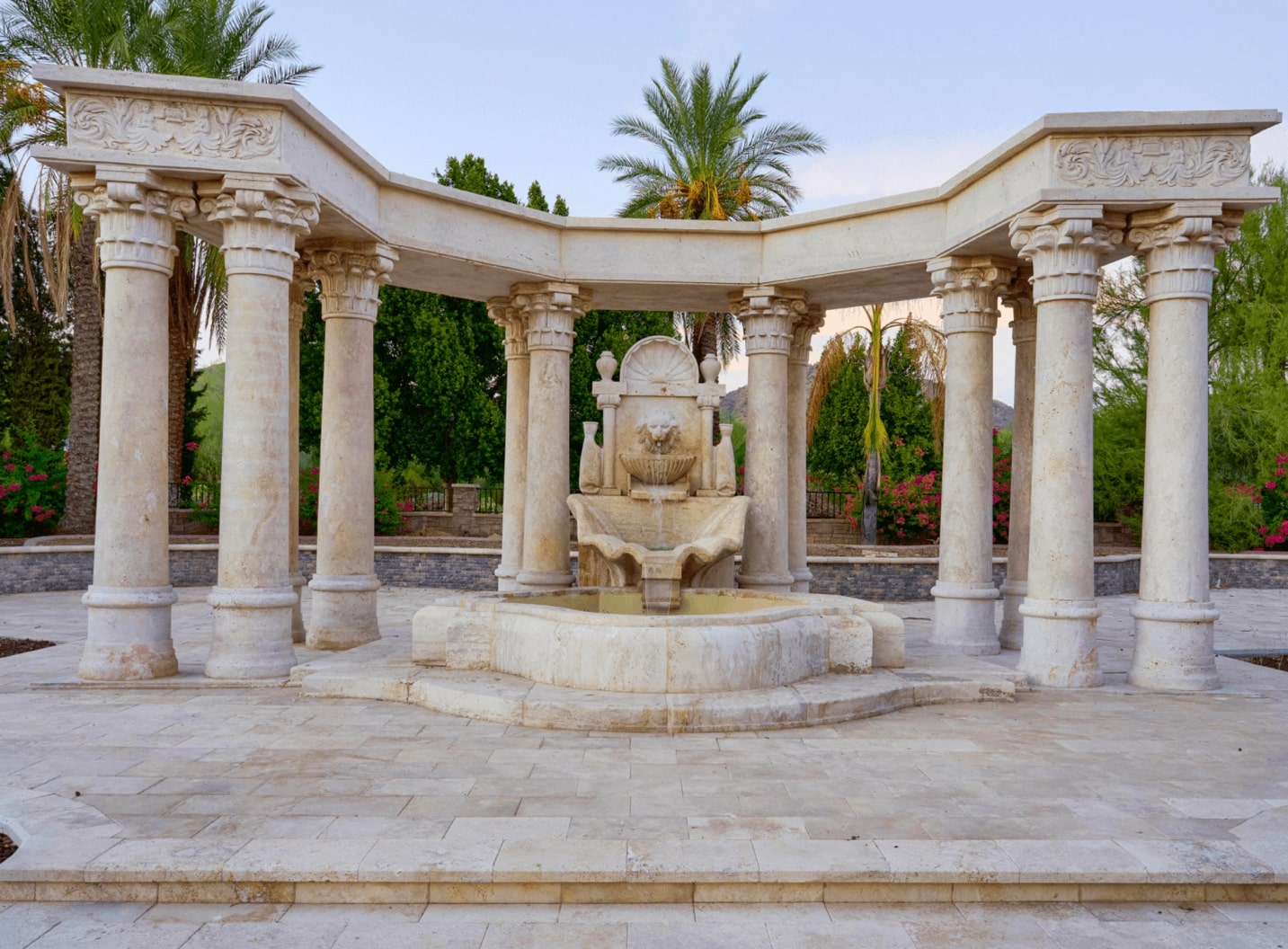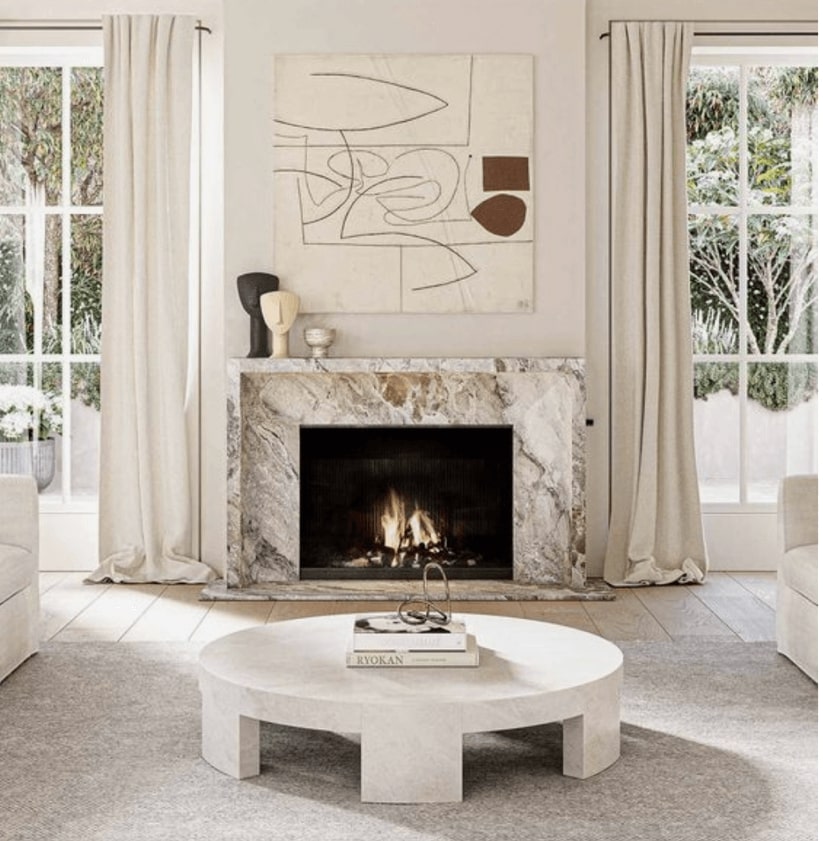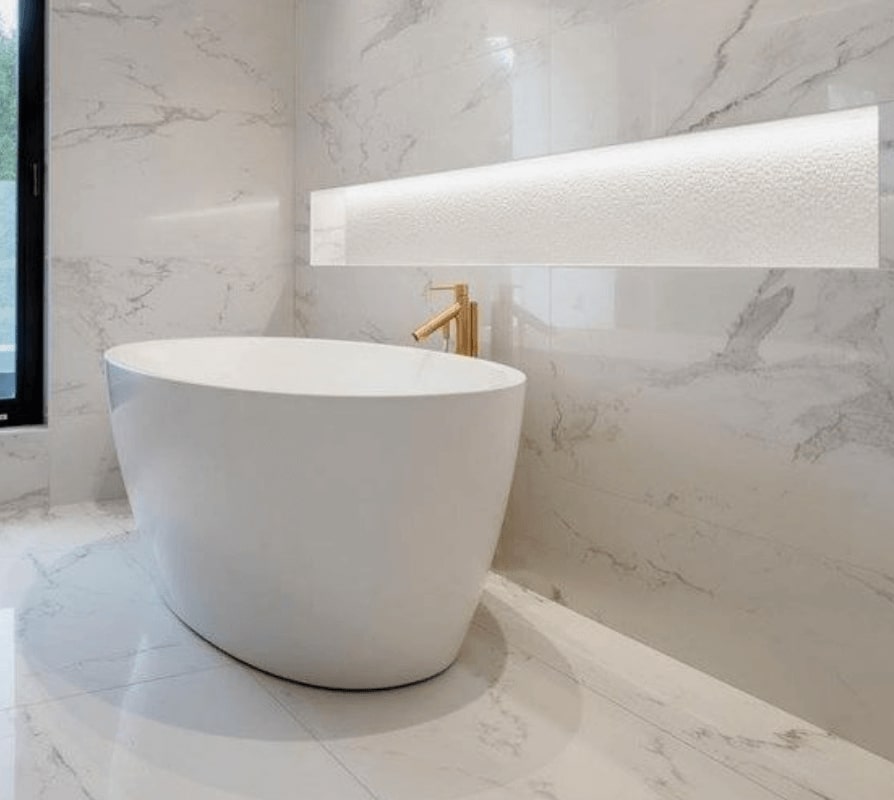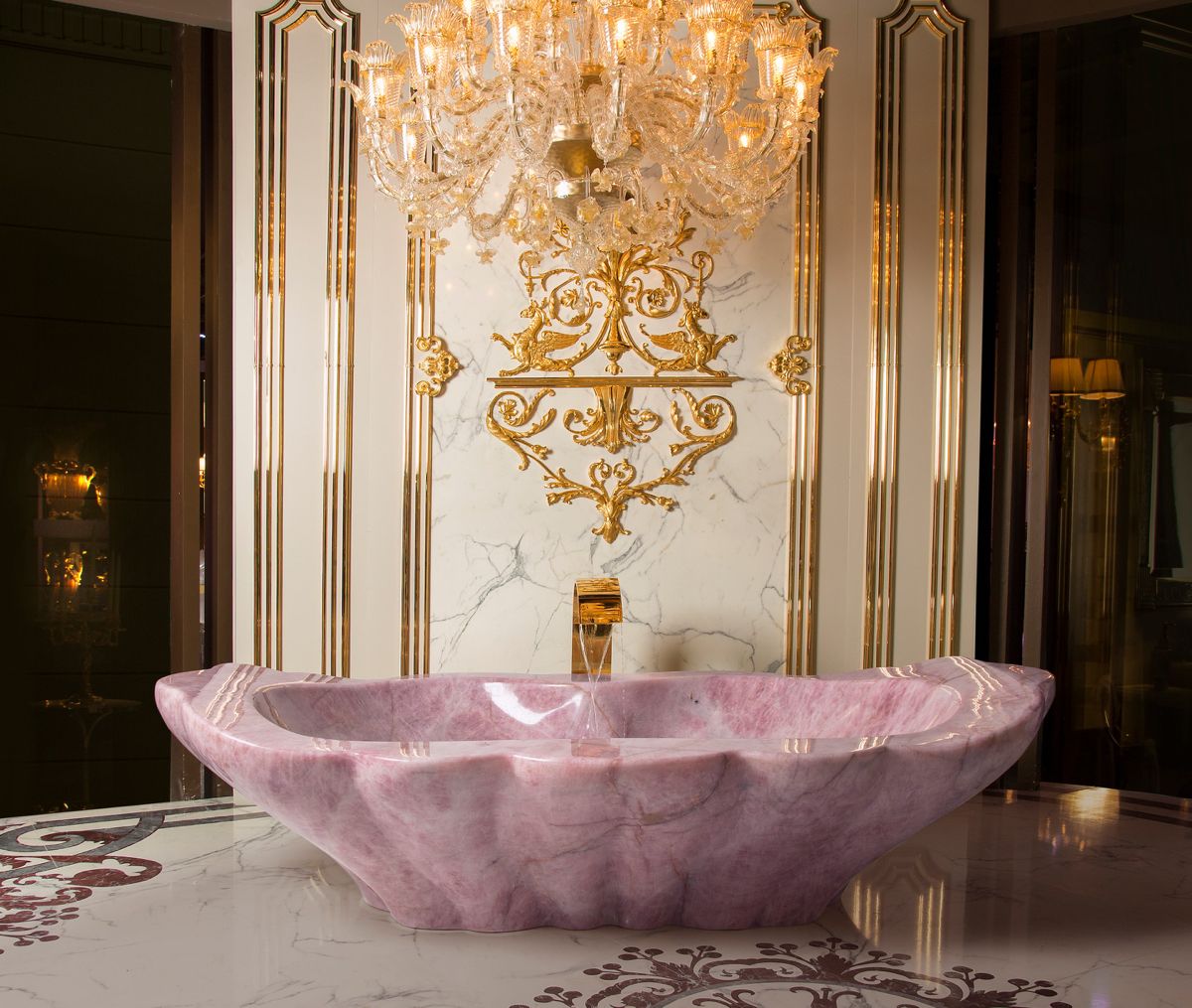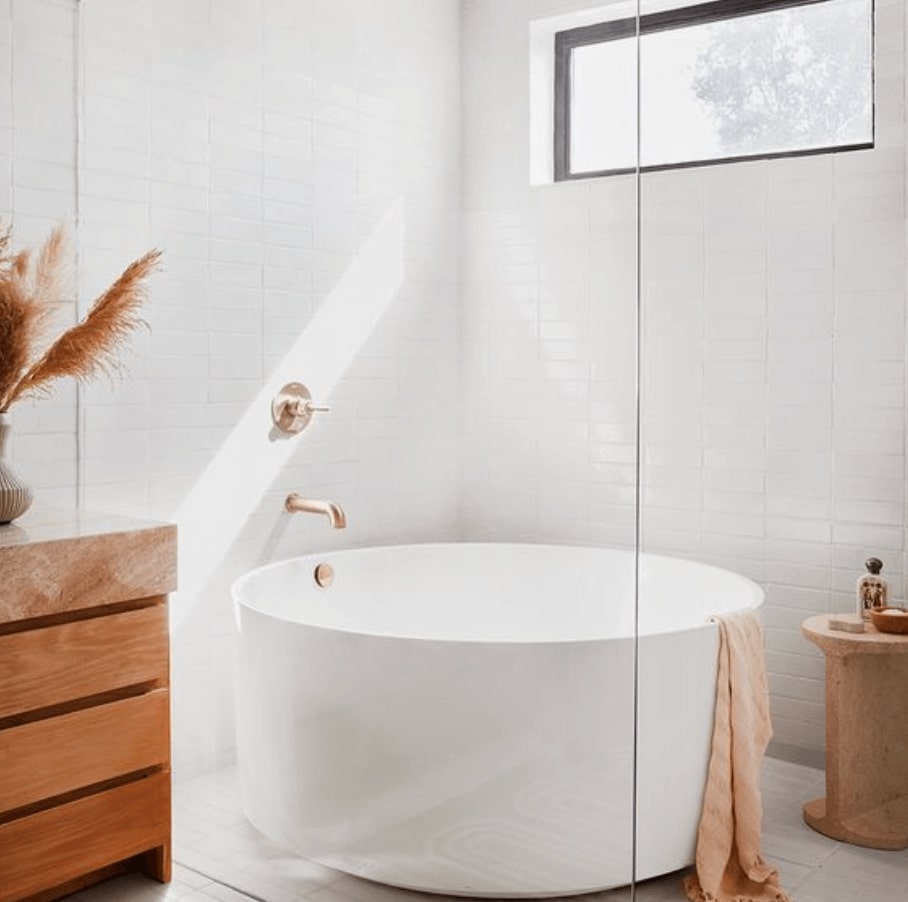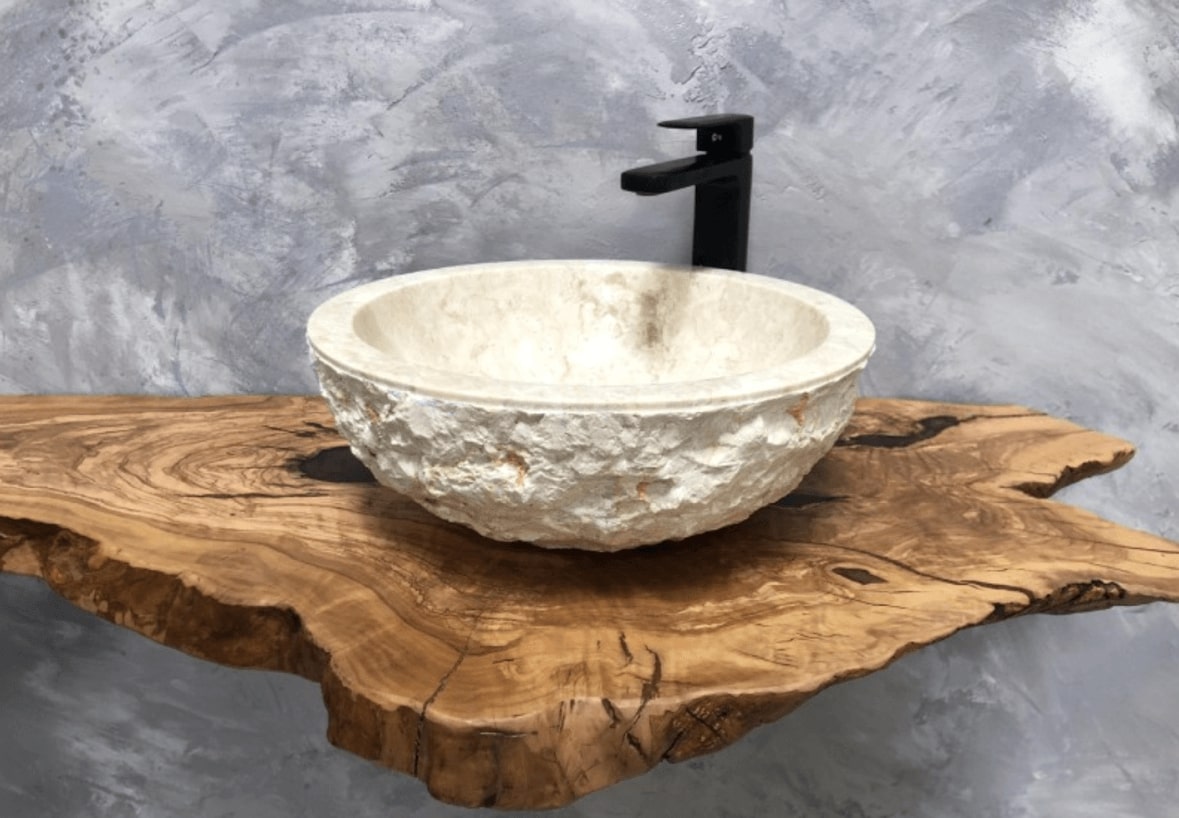Stone Tubs in Bathroom Design History
“Explore the history and elegance of stone soaking tubs, from ancient designs to modern trends, including the timeless allure of white stone baths. ”
Introduction
Stone tubs, including stone tubs, stone free standing tubs, and marble tubs, have captivated homeowners and designers for centuries with their natural beauty and durability. These tubs serve as striking focal points in any bathroom, blending functionality with aesthetic appeal. Whether crafted from luxurious marble or sturdy granite, stone tubs add timeless elegance to any space.
Stone tubs for sale have a rich history intertwined with the evolution of bathroom design. Dating back to ancient Greek and Roman bathhouses, marble tubs were symbols of luxury and sophistication. Through opulent medieval and Renaissance bathing chambers, stone tubs continued to signify status and refinement. The Victorian era saw their integration into homes with indoor plumbing, solidifying their timeless allure.
Today, stone tubs are experiencing a revival in contemporary bathroom design. Modern stone free standing tub feature sleek, minimalist designs that complement various décor styles, from rustic to ultra-modern. Marble tubs, in particular, offer timeless sophistication, and the versatility of stone allows for numerous customization options. Stone tubs are more than functional elements—they are statements of luxury and timeless design.
The Appeal of Stone Tubs

Stone tubs have long been a symbol of luxury and sophistication in bathroom design. Their natural beauty and durability make them a sought-after choice for homeowners looking to create a unique and elegant bathroom space. The timeless appeal of stone tubs lies in their ability to blend seamlessly with various design styles, from classic to contemporary.
Importance in Bathroom Design History
Stone tubs have played a significant role in the evolution of bathroom design. From ancient civilizations to modern-day interiors, these tubs have been a staple in creating spaces that are both functional and aesthetically pleasing. Understanding the history of stone tubs provides insight into their enduring popularity and the timeless elegance they bring to any bathroom.
The Origins of Stone Tubs

Ancient Civilizations and Bathing Practices
The use of stone tubs dates back to ancient civilizations, where bathing was an essential part of daily life. The Greeks and Romans, in particular, were known for their elaborate bathhouses, which featured stone tubs carved from marble and other natural stones. These early designs were not only functional but also served as a testament to the craftsmanship and artistry of the time.
Early Stone Tub Designs

Early stone free standing tub were often large, rectangular basins placed in communal bathing areas. They were carved from solid blocks of stone and adorned with intricate carvings and motifs. These tubs were designed to hold water and provide a luxurious bathing experience, reflecting the importance of cleanliness and relaxation in ancient cultures.
Medieval and Renaissance Bathroom Designs
The Evolution of Bathing Habits

During the medieval and Renaissance periods, bathing habits began to evolve. While public bathhouses became less common, private bathing facilities in castles and manors emerged. Stone tubs remained a popular choice for the wealthy, symbolizing status and refinement.
Stone Tubs in Castles and Manors

In medieval castles and Renaissance manors, stone tubs were often placed in opulent bathing chambers. These tubs were typically smaller than their ancient counterparts but retained their luxurious appeal. The use of stone continued to signify wealth and sophistication, making these tubs a focal point in grand homes.
18th and 19th Century Innovations

The Rise of Indoor Plumbing
The 18th and 19th centuries marked a pivotal era in indoor plumbing advancement, reshaping bathroom design. Stone free standing tub evolved alongside these changes, with designs becoming more sophisticated and seamlessly integrated into home interiors. The advent of running water facilitated more convenient and hygienic bathing experiences, further elevating the appeal of stone free-standing tubs.
Stone Tubs in Victorian Homes

Victorian homes often featured elaborate bathrooms with stone tubs as the centerpiece. These tubs were frequently made from marble and showcased intricate detailing. The Victorian era's emphasis on luxury and comfort made stone tubs a popular choice for homeowners looking to create a lavish bathing environment.
Modern Bathroom Design Trends
The Revival of Stone Tubs

In recent years, there has been a revival of interest in stone tubs. Modern homeowners appreciate the blend of tradition and contemporary design that stone tubs offer. The natural beauty and unique patterns of stone make each stone free standing tub a work of art, adding a touch of luxury to any bathroom.
Contemporary Stone Tub Designs
Contemporary stone tubs designs emphasize clean lines and minimalist aesthetics. Freestanding stone tubs, with their sculptural forms and smooth surfaces, have become a favorite among interior designers. These tubs are often paired with sleek fixtures and modern accessories to create a cohesive and stylish bathroom space.
Choosing the Right Stone Tub
Types of Stone: Marble, Granite, and Limestone

When selecting a stone tubs, it's essential to consider the type of stone that best suits your needs and preferences. Marble, granite, and limestone are popular choices, each offering unique characteristics. Marble is known for its elegance and classic appeal, while granite is valued for its durability and resistance to stains. Limestone, with its softer texture, provides a more rustic and natural look.
Factors to Consider: Size, Shape, and Style

Choosing the rightstone free standing tub involves considering factors such as size, shape, and style. Ensure the tub fits comfortably within your bathroom space and complements the overall design. From rectangular and oval shapes to more unconventional designs, there are plenty of options to suit various tastes, even when opting for a stone free standing tubs.
Incorporating Stone Tubs into Bathroom Decor
Complementary Materials and Fixtures

To enhance the beauty of your stone tubs, pair it with complementary materials and fixtures. Glass, metal, and wood can create a harmonious balance, while high-quality faucets and handles add a touch of elegance.
Color Schemes and Themes

Choose a color scheme that highlights the natural beauty of the stone. Neutral tones work well with most types of stone, but you can also experiment with bolder colors for a more dramatic effect. Themes such as spa-like retreats or rustic havens can guide your design choices.
Accessorizing Your Stone Tub
Accessorize your stone stone free standing tub with plush towels, elegant bath trays, and luxurious bath mats. Adding plants or candles can enhance the spa-like atmosphere and create a relaxing environment.
Benefits of Stone Tubs

Durability and Longevity
Stone tubs are incredibly durable and can last for decades with proper care. Their solid construction makes them resistant to chips and cracks, ensuring they remain a beautiful feature in your bathroom for years to come.
Aesthetic Appeal
The natural beauty of stone, with its unique patterns and colors, adds a touch of elegance to any bathroom. Stone free standing tub can serve as a stunning focal point, elevating the overall design of the space.
Heat Retention Properties
Stone tubs have excellent heat retention properties, keeping your bathwater warm for longer. This makes for a more enjoyable and relaxing bathing experience.
Maintenance and Care for Stone Tubs

Regular Cleaning Tips
To maintain the beauty of your stone free standing tub, clean it regularly with a mild, pH-neutral cleaner. Avoid using harsh chemicals or abrasive sponges, as these can damage the stone's surface.
Preventing and Treating Stains
Prevent stains by wiping up spills immediately and using a stone sealant to protect the surface. If stains do occur, a mixture of baking soda and water can help lift them without damaging the stone.
Long-term Maintenance Strategies
Regularly reseal your stone tubs to maintain its protective layer. Consider professional polishing every few years to keep the stone looking its best.
Eco-friendly and Sustainable Options

Sustainable Stone Sourcing
Choose stone sourced from quarries that prioritize sustainable practices. This includes minimizing environmental impact and ensuring fair labor conditions.
Eco-friendly Sealants and Cleaners
Use eco-friendly sealants and cleaners to maintain your stone tubs. These products are less harmful to the environment and can prolong the life of your stone.
Reducing Environmental Impact
Consider the overall environmental impact of your bathroom renovation. Opt for energy-efficient fixtures and water
Cost and Budget Considerations

When considering the luxurious addition of a stone tub to your bathroom, understanding the cost and budget implications is crucial. Here, we break down the price ranges, budget-friendly alternatives, and the value of investing in quality.
Price Range for Stone Tubs
Stone free standing tub are renowned for their beauty and durability, often coming with a price tag to match. Typically, the cost of stone tubs can range from $2,500 to over $10,000. The price varies based on factors like the type of stone (granite, marble, travertine), the size of the tub, and the intricacy of its design. High-end options might include custom shapes and rare stone types, which can significantly increase the cost.
Budget-friendly Alternatives
For those who love the aesthetic of stone tubs but are mindful of their budget, there are several alternatives. Composite stone tubs, made from crushed stone and resin, offer a similar look and feel at a fraction of the cost, often ranging from $1,000 to $3,000. Additionally, acrylic or fiberglass tubs with a stone-like finish can provide an affordable yet stylish option.
Investing in Quality
Investing in a quality stone tubs can be a wise decision for long-term durability and elegance. While the initial investment is higher, stone tubs are incredibly durable, resistant to chips and scratches, and can retain heat longer, enhancing the bathing experience. Over time, the longevity and timeless appeal of a stone tub can make it a valuable addition to your home, potentially increasing its resale value.
DIY vs. Professional Installation

Pros and Cons of DIY Installation
Choosing to install stone tubs yourself can yield significant savings on labor expenses and afford you full control over the project schedule. Moreover, DIY endeavors provide a gratifying sense of accomplishment. Nonetheless, undertaking such projects can prove time-intensive and demand a specific set of expertise. Errors in execution might incur supplementary expenses and compromise the overall quality, diverging from the standards upheld by professional installations.
When to Hire a Professional
Hiring a professional is advisable for complex projects that require specialized skills, such as electrical work, plumbing, or structural modifications. Professionals can complete the work more quickly and ensure it meets high-quality standards, reducing the risk of errors and safety hazards. If you have tight deadlines or lack the necessary expertise, bringing in a professional can provide peace of mind and a superior finish.
Installation Process Overview
The installation process for a stone free standing tub typically involves several key steps, whether you opt for a DIY approach or hire a professional. It starts with thorough planning and preparation, which includes gathering materials and acquiring permits if required. Next comes site preparation, followed by the actual installation according to detailed instructions or industry standards. After the tub is installed, a comprehensive inspection and testing phase ensues to ensure everything operates correctly. Finally, any necessary finishing touches such as trim work and cleanup are carried out to bring the project to completion.
Stone Tubs in Luxury Bathrooms

Creating a Spa-like Retreat
Stone tubs can transform a regular bathroom into a spa-like retreat, offering an unparalleled sense of relaxation and luxury. The natural textures and unique characteristics of stone create a calming environment, perfect for unwinding after a long day. The thermal properties of stone also help maintain water temperature longer, enhancing the overall bathing experience.
High-end Stone Tub Designs
High-end stone tubs designs are at the forefront of luxury bathroom trends, featuring sleek, modern lines or classic, timeless shapes. Materials such as marble, granite, and travertine are popular choices, each bringing its own aesthetic and tactile qualities. These tubs are often the centerpiece of a bathroom, combining functionality with artistic elegance.
Customization Options
Customization options for stone free standing tub are extensive, allowing homeowners to tailor their tub to fit their specific needs and preferences. From choosing the type of stone and finish to selecting the size and shape, customization ensures that the tub fits seamlessly into the bathroom design. Additional features like integrated seating, custom fixtures, and unique carving details can further personalize the bathing experience.
Incorporating a stone free-standing tub into a luxury bathroom not only elevates the space's aesthetic appeal but also enhances the functional and experiential aspects of the bathroom. Whether you prefer a contemporary or classic style, stone free-standing tubs offer endless possibilities for creating a personalized, luxurious retreat.
Future Trends in Bathroom Design

Innovative Materials and Techniques
The future of bathroom design is being shaped by the use of innovative materials and cutting-edge techniques. High-performance surfaces like engineered stone and large-format tiles are becoming increasingly popular for their durability and aesthetic appeal. Advanced techniques such as seamless integration of sinks and countertops, along with the use of 3D printing for custom fixtures, are revolutionizing the way bathrooms are designed and constructed, providing a sleek and modern look.
Smart Bathroom Technologies
Smart technologies are revolutionizing bathrooms, turning them into high-tech sanctuaries of convenience and luxury. From voice-activated lighting to smart mirrors with integrated displays, and automated shower systems enabling users to regulate temperature and water flow via smartphone apps, these advancements are rapidly becoming commonplace. With their ability to enhance the user experience and promote energy efficiency and water conservation, smart technologies are an intelligent choice for the future of bathroom design, even for stone tubs.
Sustainable and Eco-friendly Designs
The future of bathroom design emphasizes sustainability, with a focus on eco-friendly materials and water-saving fixtures. Designers integrate recycled and sustainable materials like bamboo and reclaimed wood into bathroom interiors. Modern eco-friendly bathrooms feature low-flow toilets, water-saving faucets, and energy-efficient lighting as standard, aiming to minimize environmental impact while preserving style and functionality. This trend reflects a rising consumer demand for green living solutions in the realm of bathroom design. Incorporating a stone free standing tub into these eco-friendly spaces adds a touch of luxury while maintaining a commitment to sustainability. Stone free standing tubs, crafted from natural materials like marble or granite, complement the earth-friendly ethos of eco-conscious bathrooms, creating a harmonious balance between luxury and environmental responsibility.
Conclusion
Stone tubs, including stone free-standing tubs, have long been cherished for their timeless elegance and durability. From ancient civilizations to modern luxury bathrooms, these tubs have been integral to the evolution of bathroom design, symbolizing luxury and sophistication. Today, the revival of stone tubs in contemporary bathroom trends showcases their enduring appeal, offering homeowners endless possibilities for creating personalized, luxurious retreats.
Customization options for stone tubs allow homeowners to tailor their bathing experience to fit their specific needs and preferences. Whether it's choosing the type of stone, selecting the size and shape, or adding unique features like integrated seating, customization ensures that the stone tub seamlessly integrates into any bathroom design. Incorporating a stone free standing tub not only enhances the aesthetic appeal of the space but also elevates the functional and experiential aspects of the bathroom.
Looking ahead, the future of bathroom design continues to embrace sustainability, innovation, and smart technologies. Even stone tubs are evolving to meet these demands, with advancements in materials, techniques, and eco-friendly designs. With their enduring allure and timeless elegance, stone tubs remain a coveted element in luxury bathrooms, offering a spa-like retreat and adding value to any home. Contact Stone Tubs today to customize your ideal bathroom tub and turn your vision into reality.
Frequently Asked Questions
1. Are Stone Tubs Durable?
Stone tubs are exceptionally durable, known for their resilience and longevity. Crafted from natural stone materials like marble, granite, and limestone, they can withstand daily use and maintain their beauty for decades with proper care.
2. How Do I Prevent Stains on My Stone Tub?
Preventing stains on your stone tub involves regular maintenance and sealing. Wipe up spills promptly, use pH-neutral cleaners, and apply a quality stone sealant to protect the surface. By following these steps, you can keep your stone tub looking pristine.
3. What is the Lifespan of a Stone Tub?
The lifespan of a stone tub depends on various factors, including the type of stone, maintenance routine, and frequency of use. With proper care and maintenance, stone tubs can last a lifetime, making them a worthwhile investment for your home.
4. Can Stone Tubs Be Repaired?
Stone tubs can be repaired in certain circumstances, such as minor chips or scratches. Professional stone restoration experts can assess the damage and perform repairs using specialized techniques and materials. However, extensive damage may require more significant repairs or replacement.
5. Are Stone Tubs Worth the Investment?
Stone tubs are considered a worthwhile investment due to their durability, aesthetic appeal, and potential to increase the value of your home. While they may have a higher upfront cost compared to other materials, their long lifespan and timeless elegance make them a valuable addition to any bathroom.
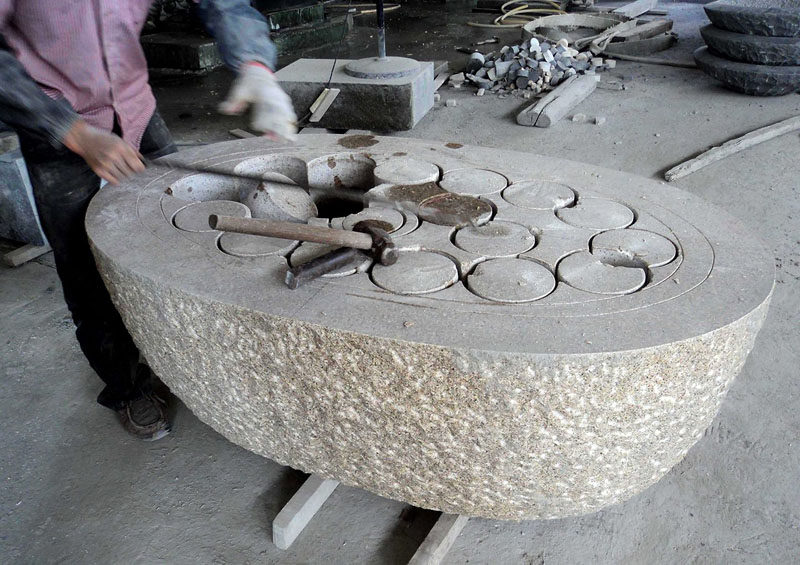
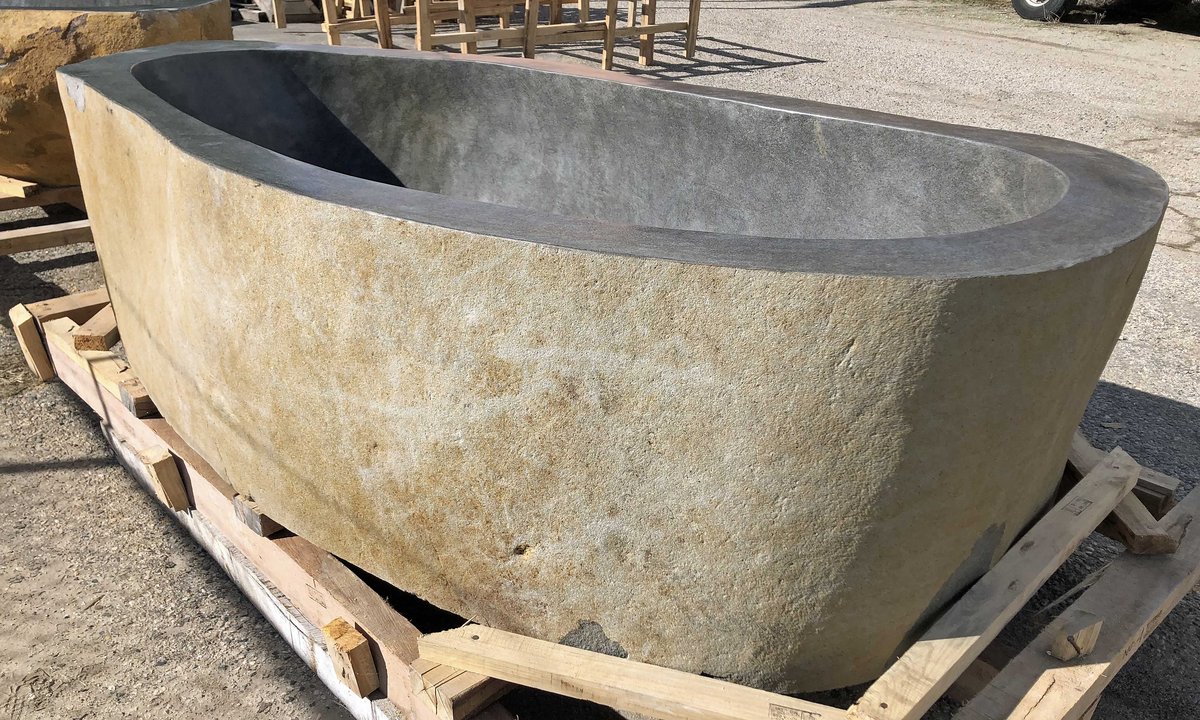
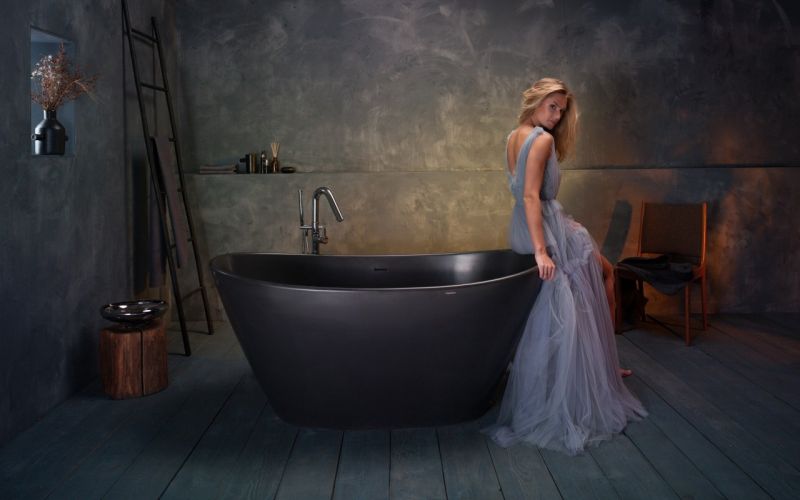
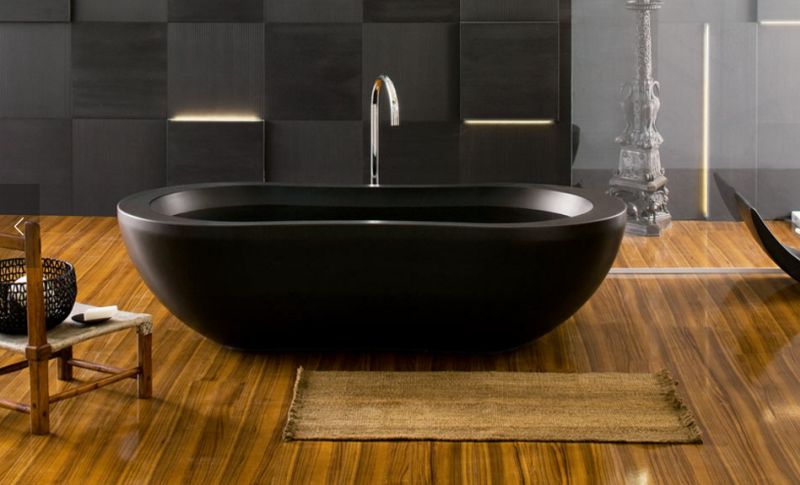
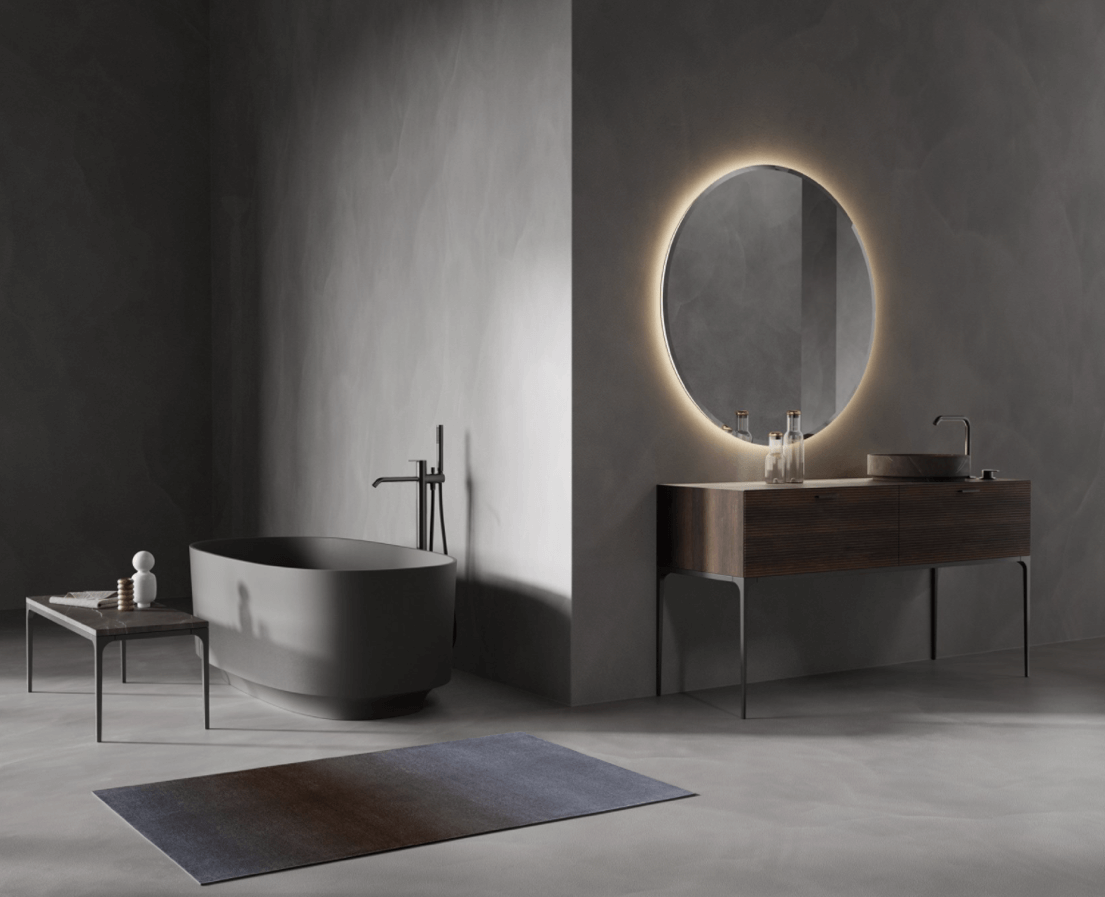
.png)
